In the Blackfeet Nation, Homegrown Teachers Take Root
Amid a nationwide teacher shortage, a program in Browning has trained over 100 local teachers, signaling a promising future for its public schools
By Denali Sagner
For months, Jeremy Wells stopped by Blackfeet Community College every single day, waiting for some good news.
At the time, Wells was employed by a metal roofing company, and spent every week driving across northwest Montana to work long hours on strenuous construction projects. When he had a break from construction, he would substitute teach in the Browning Public Schools (BPS), his alma mater, as a way to supplement his income.
More importantly, though, filling in as a substitute put Wells one step closer to the career he had set his sights on since his adolescence — teaching.
After graduating from Browning High School, Wells completed his associate’s degree in elementary education at Blackfeet Community College (BCC), a two-year program that endowed him with some fundamental teaching skills, but left him short of the four-year bachelor’s degree required to be a Montana certified teacher. Though he wanted to teach full-time, family obligations made it impossible for Wells to leave Browning to finish his degree elsewhere, and the community college didn’t offer a bachelor’s degree in education. Life became a cycle of construction and substitute teaching when the school district needed his help.
“I was kind of just stuck,” Wells said.

In 2016, however, Wells began to hear rumors of a new program at the community college, one that might allow him to finish his four-year degree without having to leave Browning. Wells had stayed in touch with Dee Hoyt, the chair of Blackfeet Community College’s education division, who told him about a grant proposal that had been submitted to the U.S. Department of Education that would bring an education bachelor’s degree program to BCC. For weeks on end, Wells anxiously stopped by Hoyt’s office to ask her if she had received the grant.
Wells even mentioned the possibility to his boss at the metal roofing company.
“I said, ‘There’s a program that’s going to be starting, and they’re going to home-grow teachers, and I want to be a part of it,’” Wells recalled.
Finally, in late 2017, Wells opened his cellphone to a message from Hoyt, while working on a steel-framing project in Columbia Falls. The grant had been approved, and the community college was opening 10 slots for students to earn bachelor’s degrees in teaching. She needed Wells there immediately.
Wells ran to his boss, who was overseeing the construction project from his truck.
“I said, ‘Remember when I told you about that program?’ And his eyes got big,” Wells said. “I was like, ‘It’s starting today. Like literally today. There are 10 spots and the person who’s holding it needs me to get there and sign.’”
His boss said, “Go.”

Today, Wells is a fourth-grade teacher at Browning’s Napi Elementary School, and the 10-slot pilot that Hoyt called him about 6 years ago is a fully fledged teacher-training program, one that has prepared 105 Montana certified teachers on the Blackfeet Reservation, and has changed the landscape of teaching and learning in the Browning Public Schools.
The 2+2 Build Tribal Community Teacher Capacity program, or the 2+2 program, is a partnership between local schools, Blackfeet Community College and the University of Montana (UM) Western, which is designed to expand access to four-year teaching degrees and increase the number of educators in Indigenous communities in Montana. Now in its third grant cycle, the program has prepared cohort after cohort of “homegrown” teachers, many of whom have returned to the program as faculty to help teach the next generation.
“It’s been a journey, but a good journey,” Hoyt said, recalling the long road the program has taken since her phone call to Wells back in 2017.
While a teacher shortage crisis sweeps across the state of Montana, and the country at large, teachers and administrators in Browning see a promising future ahead for the district, where 2+2 graduates now fill the hallways and classrooms that once sat dreadfully understaffed. Though the district has battled its share of staffing issues, the impacts of the program are palpable, and signal a promising cycle of success, not only for the young Blackfeet tribal members entering the profession, but also for the students that learn from them, and may one day follow in their footsteps.
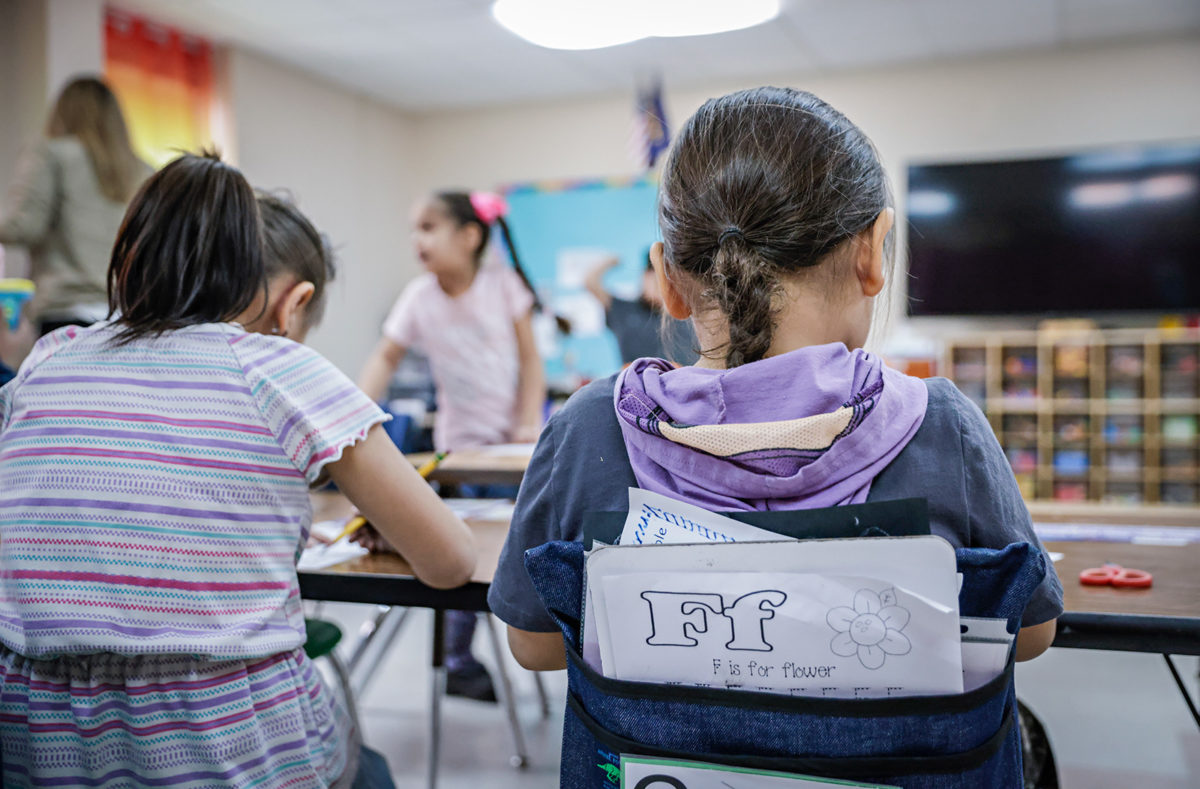
Before the 2+2 program helped fill dozens of teaching roles in the district, Browning Public Schools Superintendent Corrina Guardipee-Hall recalled a much more difficult era for her schools, one that weighs heavily on the collective memory of the district’s administrators.
For decades, institutional barriers to obtaining a teaching degree in Browning, as well as the harsh nature of life on the east side of the Continental Divide, made it difficult for BPS to recruit and retain teachers. School officials described a pattern where outside educators would move to the community to teach, only to quit their jobs months later, forcing the district to scramble to fill mounting vacancies.
“We just had a revolving door for so many years,” Guardipee-Hall said.
Robin Johnson, a former public school teacher who currently teaches elementary education at BCC, said that many non-Blackfeet educators had trouble connecting with their Native students, and struggled with life on the reservation when the winter months set in.
“The retention rate was so poor. We would lose teachers before Christmas, or they would just leave unannounced,” Johnson said. “The weather, our cultural differences, I think, had a lot to do with it.”
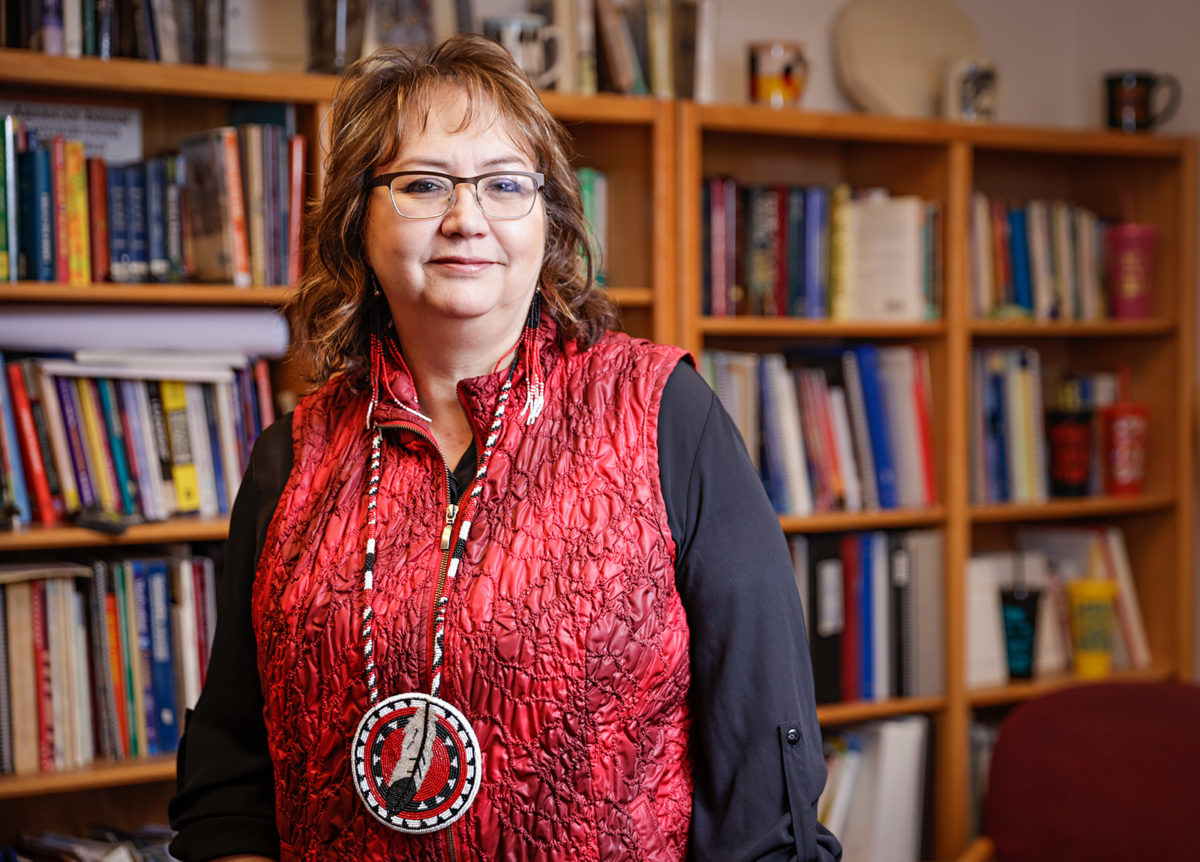
Around the same time that BPS was struggling to retain teachers from outside of the tribe, young tribal members like Wells who wanted to become educators found themselves locked in substitute and assistant teacher roles, given the absence of a four-year degree program at BCC. Many received emergency authorizations to teach, a provision in Montana’s education licensing guidelines that allows district administrators “who have exhausted all possibilities for hiring a licensed teacher” to “issue an emergency authorization of employment,” yet these approvals were temporary and did not come with the security of a full-time job.
While some aspiring educators left Browning to attend four-year degree programs, many didn’t, hindered by financial burdens, family obligations and the culture shock that Indigenous students can encounter when moving to college town, often hours away from home.
According to a 2022 study by the Native Forward Scholars Fund, more than half of surveyed Indigenous college students reported experiencing food insecurity, being responsible for contributing to family bills and running out of spending money while at school. Native students at universities have also historically reported a lack of cultural resources on college campuses, and struggled with the isolation that comes with being far from family and tribal lands.

Hoyt and Vikki Howard, the coordinator of the Special Education Program at UM Western in Dillon and an adjunct professor at Blackfeet Community College, saw the glaring disconnects in this system — one that that left BPS schools understaffed, despite many Browning graduates eagerly wanting to become teachers. Non-native teachers cycled through the broken “revolving door,” leaving vacancy after vacancy in the school district that would be temporarily filled by emergency authorizations.
Rather than push Blackfeet tribal members to far-away colleges and force BPS administrators to hire from far-away communities, Hoyt and Howard wrote up an ambitious plan — bring a four-year education degree to Browning, one that would be by Blackfeet teachers, and for Blackfeet teachers.
In 2016, the U.S. Department of Education awarded Hoyt and Browning Community College its first grant to create the 2+2 program, a partnership between BCC and UM Western that would take place entirely on BCC’s campus.
“We wrote the grant and we said, ‘By 2020 we’ll have 40 certified Montana teachers,’” Hoyt said. “We went to Washington, D.C., our first meeting, they thought we were crazy,” she added with a laugh.
To date, Hoyt noted, the program has trained 105 certified Montana teachers.
In the 2+2 program, students complete their first two years of college through BCC, and then finish out their bachelor’s degree through UM Western courses that are taught on-site at BCC. In addition to the community college’s own instructors, graduates of the 2+2 program who currently work in the public schools teach college classes and take students under their wing through a year-long student teaching residency program.
Howard told the Beacon this cyclical formula helps facilitate mentorship between current and prospective teachers, and allows students to receive training that is specific to Browning’s students and to the current educational landscape. More traditional education courses are often taught by college professors who are years removed from the classroom, and who cannot speak to the cultures of specific districts, especially when it comes to Indigenous students, Howard said.
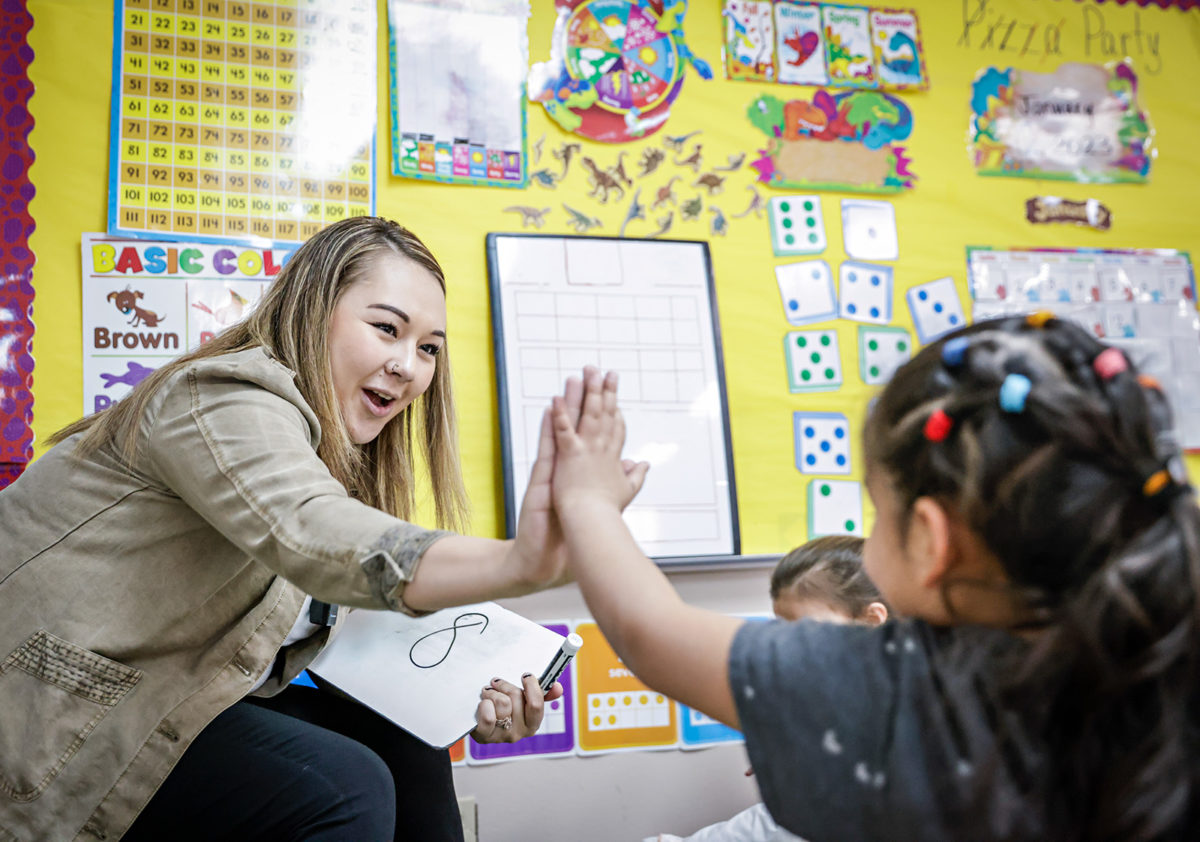
“Our students are specifically prepared to teach Native children and to use the curricula that are used in schools and the frameworks that are used in schools,” Howard said. “We tried to leverage all of the resources in the community. Our relationship with the schools has been really critical.”
In 2018, the Department of Education funded the program again, this time to the tune of a $1.4 million Indian Education Professional Development grant. The second grant cycle expanded the program into special and secondary education, an important step in filling critical vacancies in the school district.
2+2 received its third round of funding in 2021, including expansions to its library media training, a Blackfeet language and culture minor and partnerships with the Heart Butte and Cut Bank Public Schools.
Even with the success of the 2+2 program, Guardipee-Hall said the district — alongside many across the state of Montana and the United States as a whole — is struggling with a shortage of teachers.
The Montana Office of Public Instruction (OPI) on Jan. 13 released its annual Critical Quality Educator Shortage Report, which identified 661 of Montana’s 825 schools as experiencing a shortage of full-time, Montana-certified educators. The most acute shortages were reported in elementary education, special education and mathematics.
“There’s a help wanted sign in all of our businesses, especially in our schools,” OPI Superintendent Elsie Artnzen told the Beacon on Jan. 6. “There is a critical need for that qualified educator to be placed in front of our students.”

Currently, five classes in the Browning Public Schools are taught through iTutor, a virtual teaching software that describes itself as a way to “face the nation’s rapidly growing demand for more educators.” Students learn virtually from remote teachers, while a teaching assistant is present in the room to moderate the classroom. Guardipee-Hall described it as “better than nothing” but “not ideal,” and said she would replace iTutor classes with in-house teachers if not for the shortage.
Experts have pointed to several phenomena to explain the nationwide teacher shortage, including shifts in American workforce patterns that accompanied the pandemic. In August 2022, there were 7.7 million teachers in the United States, an astonishing drop from the pre-pandemic 8.1 million teachers. Educators have cited inadequate resources, low salaries, difficulties teaching students in the wake of pandemic-related learning lags and the threat of gun violence in schools, among other concerns, as reasons for leaving the profession. Moreover, fewer young people are electing to study education in college.
There are currently 450 vacancies posted on Montana Jobs-for-Teachers, a recruiting website run by OPI.
John Salois, the human resources director at BPS, said he’s constantly looking into new ways to recruit teachers to the district, including hiring educators from abroad. While he meets qualified young people during visits to Montana universities, he said many don’t end up applying to work in the district. Last year marked the lowest number of applicants he has seen in years.
“We’re lucky we have the 2+2 program,” Salois said, noting that despite the shortages, he has been able to fill vacancies with graduates of the program.
“The teachers that are going through the program, they’re staying,” he added.
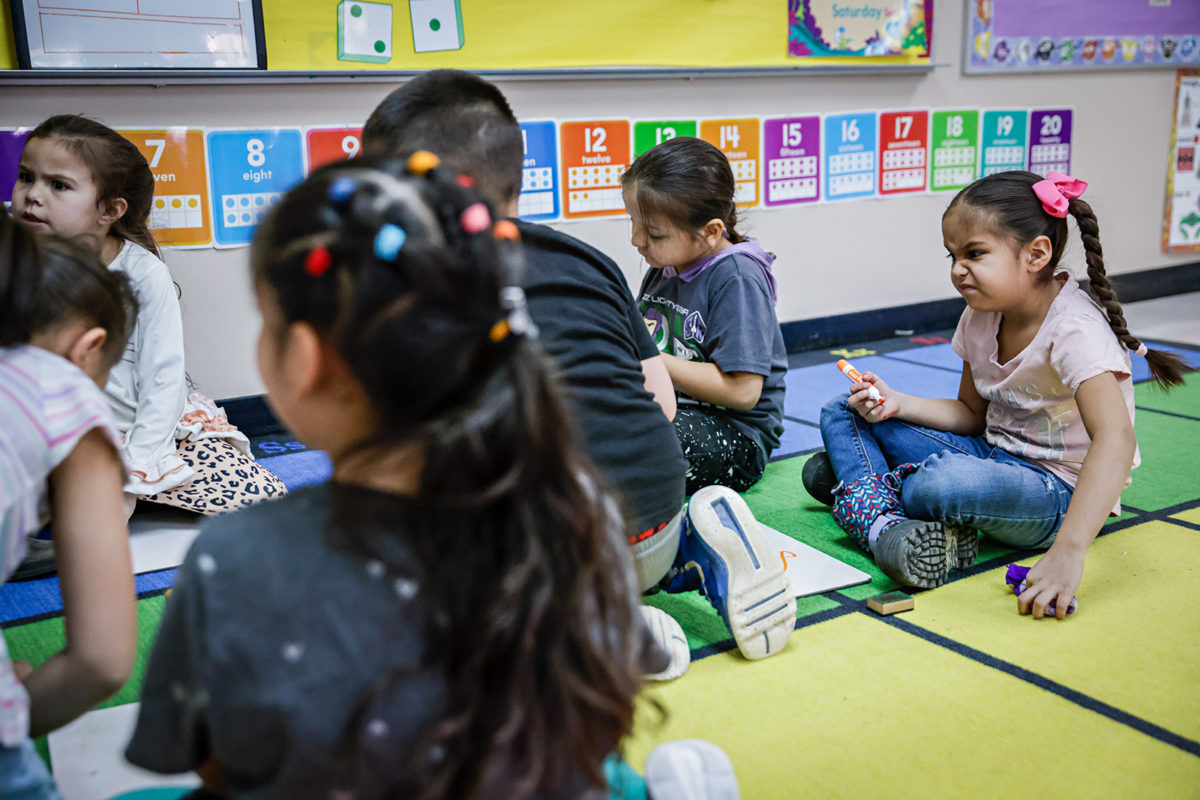
For Guardipee-Hall, the difference in her schools since BPS began partnering with the 2+2 program is night and day.
Teacher retention and student outcomes have improved immensely, due in large part to the impact of having homegrown Blackfeet teachers leading classrooms. She estimates that the number of vacancies in the district has dropped by 50% since partnering with 2+2.
As she walked through the halls of Napi Elementary School on a Thursday afternoon, nearly every teacher she passed was a product of 2+2. Now, program graduates are taking on leadership roles, training younger generations and inspiring high school students to enroll, Guardipee-Hall said. Today, for the first time in history, the Browning Public Schools have an entirely Indigenous administration.
“They’re role models for our students and they really care about our community,” the superintendent said, talking about the dozens of 2+2 grads who now work in the district. “They’re here. They have an investment in their future because this is our community, and that has made a difference in how they interact with students. It’s not such a culture shock when they come in and they start because they already know our kids.”

Wells and Jessica Salois, a fifth-grade teacher at Napi and John’s daughter (the Salois family is a “family of teachers,” according to Jessica), said that understanding the trauma that Indigenous children experience is a critical part of their job, one that outside teachers often struggle to grasp. The U.S. Department of Health and Human Services reports that Native American children are 2.5 times more likely to experience trauma than their non-Native peers, and experience post-traumatic stress disorder (PTSD) at a rate of 22%, the same rate as military veterans returning from Iraq and Afghanistan, and three times the rate of the general population.
Wells said many of his students score disproportionately high on the Adverse Childhood Experiences (ACE) questionnaire, a childhood development assessment that measures trauma, such as substance use, poverty, mental illness and abuse.
“Some of them come into your classroom, and out of 10, they can score 12,” he said.
Despite the difficulties their students face, Wells and Salois said the positive effect of having a Blackfeet role model in the classroom is already palpable.
“I’ve had a lot of parents and students say how thankful they are to have, not only people who have grown up here, but Native American teachers. We understand their home life and the culture,” Jessica Salois said. “Giving them a place where they can feel safe in the classroom, that’s helped them a lot.”
One mother recently told Salois she was grateful to have “a strong Native American woman” teaching her daughter, which Salois said “made me feel like I’m in the right place, that I’m doing what I’m supposed to be doing, helping these kids where they need it.”
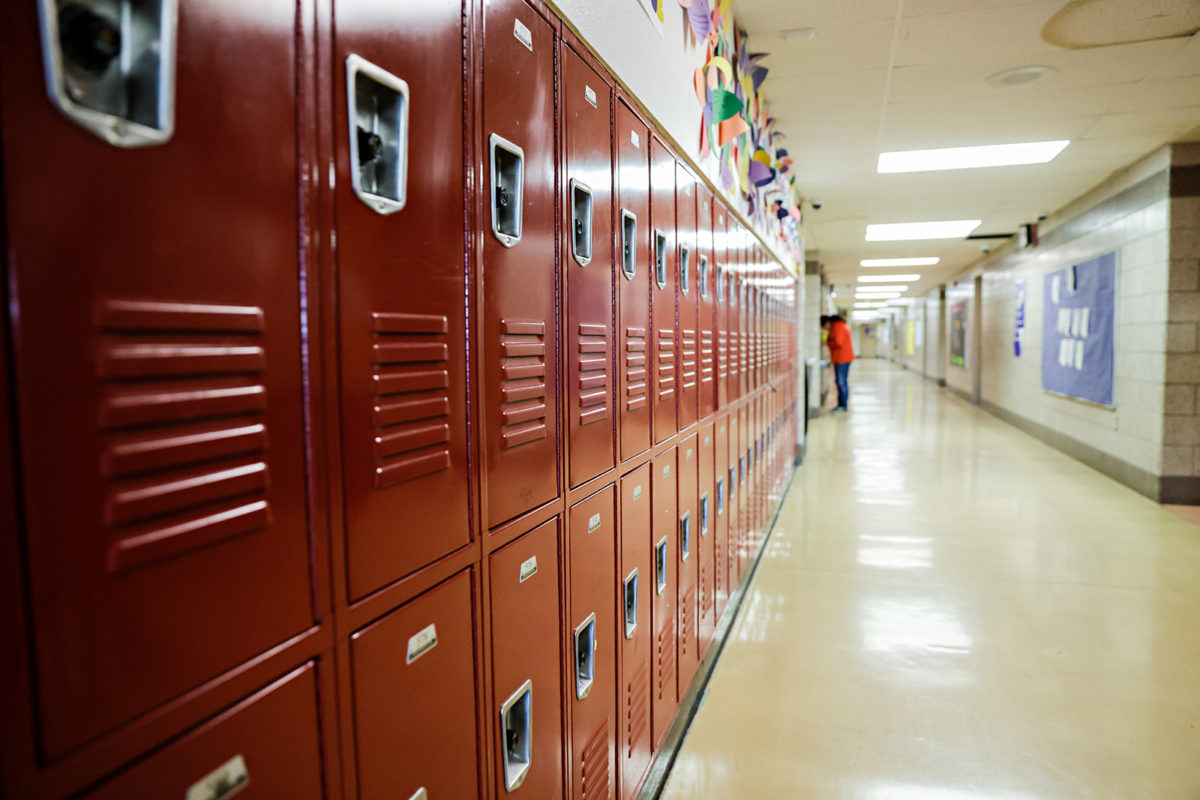
Both teachers integrate Blackfeet language and culture into the classroom and make a point of bringing up even the smallest things, like the grocery store in town, to remind students of their shared experiences. Though his students are young, Wells emphasizes college readiness and preparing his class for the future — maybe even a future in the 2+2 program.
Currently, Hoyt and her team at BCC are working on another ambitious plan — by the end of the year, Hoyt hopes to break 2+2 off from UM Western, and have a fully fledged four-year education degree program at the community college. The college’s Board of Trustees recently approved the initial framework, an important benchmark for the program’s next steps. While Hoyt will miss her partnership with UM Western and Howard, she believes BCC and her 2+2 faculty are ready to train teachers on their own.
“We gotta show them that there’s good,” Wells said, discussing his own students and their path toward a college degree. “With this program, they don’t have to leave. It’s right there in front of them. They just have to go down there and sign up.”